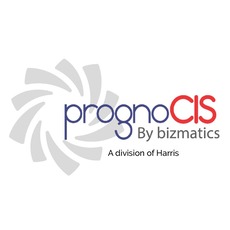
Electronic Health Record
https://prognocis.com/ Reviews 04/24/2025The adoption of Electronic Health Records (EHRs) began in the early 2000s, due to advancements in technology, and the need for better patient data management. In 2009, the Health Information Technology for Economics and Clinical Health (HITECH) Act was passed, which provided financial incentives through a Medicare and Medicaid EHR incentive program, later known as Meaningful Use. Between 2011 and 2015, a growing number of providers adopted EHRs to qualify for federal incentives and avoid penalties. Then in 2020, the COVID pandemic hit creating a sudden need for patients to be treated remotely. The Office of National Coordinator for Health Information Technology (ONC) estimated that as of 2020, approximately 88% of all U.S. physician offices used some form of electronic health records.
Electronic Health Records systems have provided significant benefits practice productivity and patient care. Providers gain access to patient data in real time. Everything from lab results to current medications is available at a glance. This reduces errors and supports more informed decision-making. Physicians can easily and effectively coordinate care with other providers, resulting in better patient outcomes and overall patient experience.
In addition to better patient care, EHR systems increase operational efficiency in your practice. Administrative tasks such as scheduling, eligibility, and billing insurance claims can be automated freeing up valuable time. Advanced features such as patient reminders can help reduce no-shows. Robust reporting tools that help you to analyze trends, track performance metrics, and identify areas for growth. By investing in an EHR, you’re investing in a system that can help your practice run more efficiently and prepare for future growth.
Key Benefits of EHR Software Improved
If you had to pick a word to sum up the EHR system advantages you can expect after investment, that word would undoubtedly be “improvement.” An EHR tool will “reinvent the wheel” far less than you think. Instead, it’s about taking the foundation you’ve already worked so hard to build and making it as strong as it can possibly be.
This happens in a number of ways, including but not limited to the following.
Key Benefits of EHR Software Improved
1. Patient Care
EHR tools give you access to real-time patient data, meaning that you don’t have to wait to put a customized treatment plan in place. This goes a long way towards reducing errors, which can help tremendously in terms of improving treatment outcomes as well.
2. Efficiency & Time-Saving
Another one of the major benefits of an EHR platform comes by way of the efficiency and time-saving it offers. This is achieved through things like streamlined documentation, providing quick access to patient history with a few quick clicks of your mouse, and of course, reduced paperwork.
According to one recent study, EHR use has increased the efficiency of healthcare providers, with more than 75% reporting that it has unlocked far faster access to key patient information when it is needed the most.
3. Cost Savings
An EHR will also help enormously reduce administrative costs by automating a lot of important but time-consuming tasks like billing, coding, and more. This frees up the valuable time of those administrators so they can focus on revenue-driving tasks.
4. Data Accuracy and Safety
Right away, having an EHR system in place will reduce human error and guarantee consistency in data. It also improves security with encryption, as you don’t have to worry about sensitive patient information falling into the wrong hands.
For more Insights: https://prognocis.com/electronic-health-records-ehr-benefits/